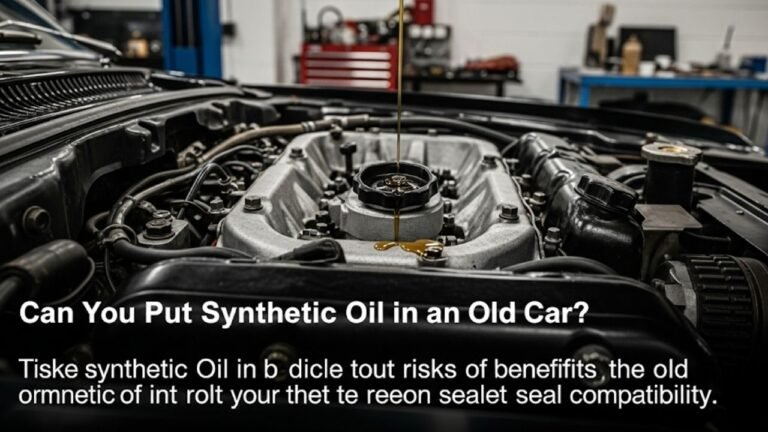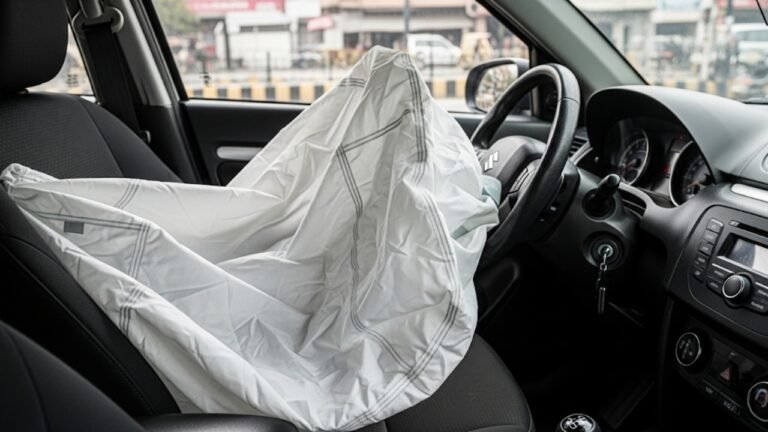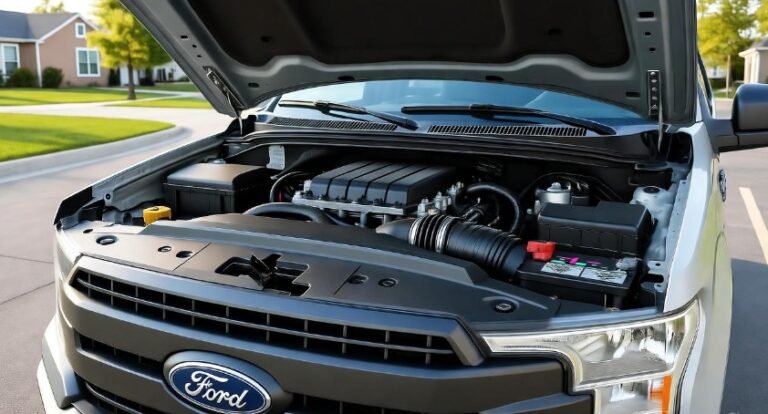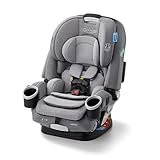Ranger Cycle Disc Brake Wali: Ultimate Guide

Unlock Smooth Rides: Your Essential Guide to Ranger Cycle Disc Brake Wali.
Learn how to maintain and troubleshoot your Ranger Cycle disc brakes with this comprehensive, easy-to-follow guide, ensuring safer, more reliable cycling.
In This Article
- 1 Key Takeaways
- 2 Understanding Your Ranger Cycle Disc Brake System
- 3 Essential Ranger Cycle Disc Brake Maintenance: Keeping Them Sharp
- 4 Troubleshooting Common Ranger Cycle Disc Brake Issues
- 5 DIY Ranger Cycle Disc Brake Bleeding: A Step-by-Step Guide
- 6 Optimizing Ranger Cycle Disc Brake Performance
- 7 Maintaining Your Ranger Cycle Hydraulic Disc Brake Fluid
- 8 Frequently Asked Questions About Ranger Cycle Disc Brakes
- 8.1 Q1: How do I know if my Ranger Cycle disc brakes are hydraulic or mechanical?
- 8.2 Q2: Can I use car brake fluid in my Ranger Cycle disc brakes?
- 8.3 Q3: My disc brakes are making a loud squealing noise. What should I do?
- 8.4 Q4: Do I need a special tool to remove my Ranger Cycle disc brake rotor?
- 8.5 Q5: How do I stop my Ranger Cycle disc brakes from rubbing?
- 8.6 Q6: How often should I get my Ranger Cycle disc brakes professionally serviced?
- 9 Conclusion: Ride with Confidence on Your Ranger Cycle
Key Takeaways
- Understand Ranger Cycle disc brake components.
- Follow simple steps for disc brake maintenance.
- Learn to identify and fix common brake issues.
- Discover DIY brake bleeding techniques.
- Optimize your braking performance for safety.
Riding a Ranger Cycle equipped with disc brakes offers a superior stopping experience, especially in varied weather conditions. But like any mechanical component, these brakes need care. Many cyclists find the maintenance of disc brakes a bit mystifying, often leading to less-than-optimal performance or even potential safety concerns. This guide is here to demystify the “Ranger Cycle Disc Brake Wali” technology, providing you with straightforward, actionable advice. We’ll walk you through everything from basic cleaning to more advanced adjustments, so you can ride with confidence. Get ready to master your disc brakes and elevate your cycling adventures.
Understanding Your Ranger Cycle Disc Brake System

Before diving into maintenance, it’s crucial to know what makes your Ranger Cycle disc brake system tick. Disc brakes on bicycles, including those on a Ranger Cycle, generally consist of a few key parts working in harmony. Understanding these components will make troubleshooting and maintenance much simpler.
The Anatomy of Ranger Cycle Disc Brakes
Your Ranger Cycle disc brake system is a marvel of engineering, designed for reliable stopping power. Here are the main components you’ll encounter:
- Rotor (Disc): This is the metal disc that attaches to your wheel hub. When you brake, the brake pads clamp onto this rotor to slow the wheel. Rotors come in various diameters, with larger ones generally offering more stopping power.
- Caliper: Mounted on the bicycle frame or fork, this housing contains the brake pistons and pads. It’s the part that squeezes the brake pads onto the rotor.
- Brake Pads: These are the friction material that contacts the rotor. They come in different compounds (e.g., organic, metallic, semi-metallic), each with its own characteristics regarding stopping power, wear rate, and noise.
- Brake Lever: Located on your handlebars, this is what you squeeze to activate the brakes.
- Brake Hose/Cable: This connects the brake lever to the caliper. For hydraulic disc brakes, it’s a hose filled with fluid. For mechanical disc brakes, it’s a steel cable.
- Pistons: Inside the caliper, these push the brake pads against the rotor.
- Brake Fluid (Hydraulic Systems): A specialized fluid that transmits force from the lever to the pistons in hydraulic systems.
Hydraulic vs. Mechanical Disc Brakes on Your Ranger Cycle
Ranger Cycles may come with either hydraulic or mechanical disc brakes. The primary difference lies in how the braking force is transmitted from the lever to the caliper.
- Hydraulic Disc Brakes: These use a fluid-filled hose. Squeezing the lever pushes fluid, which in turn presses the pistons and brake pads. They generally offer more power and modulation (finer control) with less effort.
- Mechanical Disc Brakes: These use a traditional steel cable. Squeezing the lever pulls the cable, which actuates a cam or lever arm to push the brake pads. They are simpler to maintain and often less expensive but may require more force at the lever and offer less precise modulation.
Knowing which type your Ranger Cycle has is the first step to effective maintenance. For most modern Ranger Cycles, especially those geared towards performance or comfortable touring, you’ll likely find hydraulic systems.
Essential Ranger Cycle Disc Brake Maintenance: Keeping Them Sharp
Regular maintenance is key to ensuring your Ranger Cycle disc brakes perform optimally and last longer. These tasks are generally straightforward and can be done at home with minimal tools.
Routine Cleaning and Inspection
The simplest maintenance is regular cleaning. Dust, dirt, and grime can accumulate on your rotors and pads, reducing braking effectiveness and potentially causing noise.
How to Clean Your Ranger Cycle Disc Brakes:
- Gather Supplies: You’ll need isopropyl alcohol (90% or higher), a clean lint-free rag or paper towel, and possibly a soft brush for stubborn dirt. Avoid using any oil-based lubricants or degreasers, as these can contaminate your pads and rotors.
- Clean the Rotor: Spray isopropyl alcohol directly onto the rotor or apply it to your rag. Wipe down the entire surface of the rotor, ensuring you remove any dirt or residue. If the rotor is particularly dirty, a soft brush can help dislodge grime before wiping.
- Clean the Pads: While you can’t easily remove the pads for cleaning (without disassembling the caliper), you can clean the exposed surfaces with a slightly damp cloth (with water only, no alcohol or soap). More intensive pad cleaning might involve light sanding, but this is usually a fix for contaminated pads.
- Inspect for Wear: Visually inspect your brake pads. Most pads have a minimum thickness requirement. If they appear thin, it’s time to replace them. Also, check the rotor for any deep grooves, warping, or significant wear.
Checking Brake Pad Wear
Brake pads are wear items and will need replacement periodically. Ignoring worn pads is dangerous and can damage your rotors.
Signs Your Ranger Cycle Brake Pads Need Replacing:
- Reduced Stopping Power: You have to squeeze the levers much harder to achieve the same braking effect.
- Squealing or Grinding Noises: A high-pitched squeal might indicate worn pads or contamination. A metallic grinding sound is a definite sign of severely worn pads where the metal backing plate is scraping the rotor.
- Visual Inspection: As mentioned, check the thickness of the pad material. If it’s down to 1-2 millimeters or looks very thin, replace them.
Rotor Condition Check
The rotor is crucial for braking. Inspect it regularly for any damage.
What to Look For on Your Ranger Cycle Rotors:
- Warping: Spin your wheel and watch the rotor. If it wobbles noticeably side-to-side as it spins, it’s warped. Warped rotors can cause pulsating brake levers and reduced braking performance.
- Grooving: Deep scratches or grooves worn into the rotor surface can indicate excessive wear or contamination.
- Cracks: Although rare, check for any hairline cracks, especially around the mounting bolts.
Troubleshooting Common Ranger Cycle Disc Brake Issues
Even with regular maintenance, you might encounter problems with your Ranger Cycle disc brakes. Here are some common issues and how to address them.
Noisy Ranger Cycle Disc Brakes: Squeals and Grinds
Noise is one of the most common complaints. It can be annoying and sometimes indicate a problem.
Causes of Noisy Disc Brakes and Solutions:
Squealing:
- Glazed Pads: Overheating can cause the pad surface to become smooth and shiny, leading to squealing. Solution: Remove pads and lightly sand the surface with fine-grit sandpaper. Clean rotors thoroughly with isopropyl alcohol.
- Contaminated Pads/Rotors: Oil or grease from your hands or the chain can get onto pads and rotors. Solution: Clean rotors thoroughly with isopropyl alcohol. For contaminated pads, you might need to replace them.
- Improper Pad/Rotor Bedding: New pads and rotors need to “bed in” to mate properly. Solution: Follow the bedding-in procedure (explained later).
- Loose Components: Check that the caliper and rotor mounting bolts are tight.
Grinding:
- Worn-Out Pads: This is the most serious cause. The metal backing of the pad is grinding against the rotor. Solution: Immediately replace the brake pads and inspect the rotor for damage.
- Debris: Small stones or grit caught between the pad and rotor. Solution: Try cleaning the rotor with isopropyl alcohol. Sometimes, a firm brake application can dislodge debris.
Spongy or Inconsistent Ranger Cycle Brake Lever Feel
A brake lever that feels soft, squishy, or doesn’t provide consistent stopping power often points to an issue with hydraulic systems.
Addressing a Spongy Brake Lever:
- Air in the Hydraulic System: This is the most common cause of a spongy lever. Air is compressible, unlike brake fluid. Solution: The brake system needs to be “bled.” This process removes air and replenishes fluid. See the “Bleeding Your Ranger Cycle Disc Brakes” section below.
- Fluid Leak: Check for any signs of brake fluid leaking from the caliper, hose, or lever. Solution: If leaks are found, consult a bike shop for repair, as it may involve replacing seals or hoses.
- Worn Seals: Seals within the caliper or lever can wear out over time. Solution: This usually requires professional service or replacement of the caliper/lever.
Ranger Cycle Brake Rubbing
Brake rub occurs when the brake pads lightly touch the rotor even when the lever is not pulled.
Fixing Brake Rub:
- Caliper Alignment: The caliper might not be perfectly centered over the rotor. Solution: Loosen the caliper mounting bolts slightly, squeeze the brake lever firmly, and then retighten the bolts while holding the lever. This often centers the caliper.
- Bent Rotor: A slightly bent rotor can cause intermittent rubbing. Solution: If the wobble is minor, you can try to gently bend it back. For significant bends, rotor replacement is recommended. Many bike shops offer rotor truing services.
- Piston Retraction: Sometimes, pistons don’t retract fully. Solution: Gently push the pistons back into the caliper using a plastic tire lever or a specialized tool. Be careful not to damage seals.
DIY Ranger Cycle Disc Brake Bleeding: A Step-by-Step Guide
Bleeding your Ranger Cycle’s hydraulic disc brakes is one of the most effective ways to restore firm lever feel and optimal stopping power. While it might seem daunting, it’s a manageable task with the right kit and patience.
What You’ll Need for Disc Brake Bleeding:
- Brake Bleed Kit: Specific to your brake brand (e.g., Shimano, SRAM, Tektro). These kits usually include syringes, hoses, and adapters.
- Correct Brake Fluid: Crucial! Use only the fluid recommended by your Ranger Cycle’s brake manufacturer (either mineral oil or DOT fluid). Never mix them.
- Allen Wrenches: For removing caliper and lever mounting bolts if necessary.
- Torque Wrench: Recommended for proper bolt tightening.
- Rags and Gloves: To catch spills and protect your hands.
- Brake Cleaner (Isopropyl Alcohol): For cleaning up any spilled fluid.
- Patience!
Step-by-Step Bleeding Process (General Guide):
Note: Always consult your specific brake manufacturer’s instructions, as procedures can vary slightly.
- Prepare the Bike: Shift the bike so the levers are accessible and the calipers are level or slightly above the levers if possible. You might need to hang the bike or use a stand.
- Attach Syringe to Caliper: Remove the bleed port screw from the caliper. Attach the syringe filled with fresh brake fluid (or an empty syringe for pushing old fluid out) to the caliper’s bleed port using the appropriate adapter from your kit.
- Open Bleed Port at Lever: Locate the bleed port screw on the brake lever. Remove the screw. Attach the other syringe (often empty, to collect old fluid) or the designated hose to this port.
- Push Fluid Through (or Pull):
- Mineral Oil Systems (e.g., Shimano): Gently push fluid from the caliper syringe up towards the lever. You’ll see old fluid and air bubbles move into the syringe at the lever. Allow air to escape. Repeat until mostly fluid comes through with minimal bubbles.
- DOT Fluid Systems (e.g., SRAM): Gently pull fluid from the lever syringe down towards the caliper. You’ll see old fluid and air bubbles move into the syringe at the caliper. Repeat until mostly fluid comes through with minimal bubbles.
- Remove Air: Tap on the hoses and caliper/lever bodies to help dislodge any trapped air bubbles. You might need to cycle the lever a few times while fluid is flowing.
- Close Bleed Ports: Once you see clean fluid and no air bubbles, close the bleed port at the lever first, then disconnect the syringe and replace the screw. Then, close the bleed port at the caliper, disconnect the syringe, and replace the screw.
- Clean Up: Thoroughly clean any spilled brake fluid from the frame, caliper, lever, and rotor using isopropyl alcohol and a clean rag. Spilled fluid can damage paint and compromise brake performance.
- Test Brakes: Squeeze the brake lever. It should feel firm and powerful. Spin the wheel to ensure there’s no rubbing. Take a short, gentle test ride.
Pro Tip: If you’re unsure about bleeding, watch detailed video tutorials specific to your brake model before you start.
Optimizing Ranger Cycle Disc Brake Performance
Getting your brakes to work at their best involves a few extra steps beyond basic maintenance.
Brake Pad and Rotor Bedding-In
Bedding-in is a process that cures new brake pads and rotors, or new pads on an existing rotor, to create an even transfer layer of pad material onto the rotor surface. This is critical for achieving maximum stopping power and minimizing noise.
How to Bed-In Your Ranger Cycle Disc Brakes:
- Find a Safe Area: You need a relatively flat, open space where you can accelerate and brake safely.
- Accelerate: Ride your Ranger Cycle to a moderate speed (e.g., 10-15 mph).
- Brake Firmly: Apply one brake firmly, but not to the point of skidding, slowing down to about half speed.
- Release and Repeat: Release the brake and accelerate back to your starting speed. Repeat this braking process 10-20 times for each brake (front and rear).
- Final Hard Braking: After several moderate applications, perform 2-3 hard stops from a moderate speed, bringing the bike to a near stop without skidding.
- Cool Down: Ride for a few minutes without using the brakes to allow them to cool down.
This process transfers a crucial layer of material to the rotor, ensuring consistent friction and performance.
Choosing the Right Brake Pads for Your Ranger Cycle
Different pad compounds offer different benefits and drawbacks.
| Pad Compound | Pros | Cons | Best For |
|—|—|—|—|
| Organic (Resin) | Quiet operation, good initial bite, easier on rotors. | Shorter lifespan, can fade in wet conditions or under heavy load, can wear faster. | Casual riding, dry conditions, riders prioritizing quietness. |
| Metallic (Sintered) | Excellent stopping power in all conditions (wet/dry/mud), very durable. | Can be noisier, harder on rotors (wear them faster), can take longer to bed in. | Mountain biking, downhill, wet/muddy conditions, aggressive riding. |
| Semi-Metallic | A good balance between organic and metallic; offer good power and durability with moderate noise. | Can still be noisier than organic, wear rate is moderate. | All-around use, commuting, trail riding, a good compromise. |
Consult your Ranger Cycle’s manual or a local bike shop to determine which pad type is compatible with your specific brake model and your riding style.
Understanding Rotor Size and Its Impact
Rotor size affects braking power and heat dissipation. Larger rotors offer more leverage and surface area for the pads, leading to greater stopping power and better resistance to heat fade.
| Rotor Diameter | Advantages | Disadvantages | Typical Use on Ranger Cycles |
|—|—|—|—|
| 160mm | Lightweight, less prone to rubbing on smaller frames. | Less stopping power, can overheat on long descents. | Lighter-duty bikes, rear wheels on some models, smaller riders. |
| 180mm | Increased stopping power and heat dissipation. | Slightly heavier, can be prone to rubbing if frame clearance is tight. | Common for front brakes, rear brakes on heavier riders/bikes, more demanding terrain. |
| 200mm+ | Maximum stopping power, excellent heat management. | Heaviest option, requires specific frame/fork mounts, can be overkill for casual riding. | Downhill mountain biking, e-bikes, heavy-duty applications. |
Your Ranger Cycle likely came with a rotor size optimized for its intended use. You can often upgrade rotor sizes (within frame/fork limitations) for increased braking performance, but consult with a professional if unsure.
Maintaining Your Ranger Cycle Hydraulic Disc Brake Fluid
Brake fluid degrades over time and can absorb moisture, reducing its effectiveness and potentially causing corrosion. Regular fluid replacement is part of a comprehensive maintenance schedule.
Why Change Your Ranger Cycle Brake Fluid?
Over time, brake fluid can:
- Absorb Moisture: This lowers the boiling point of the fluid, leading to brake fade during long descents or heavy braking. It can also cause corrosion within the brake system.
- Degrade: Contaminants and heat can break down the fluid’s lubricating properties.
How Often Should You Change Brake Fluid?
For most hydraulic disc brakes, manufacturers recommend changing the fluid every 12-24 months, or as indicated in your Ranger Cycle’s service manual. If you notice a spongy lever feel that bleeding doesn’t fully fix, it’s a strong indicator the fluid needs changing.
Frequently Asked Questions About Ranger Cycle Disc Brakes
Q1: How do I know if my Ranger Cycle disc brakes are hydraulic or mechanical?
A1: Check the brake line connecting the lever to the caliper. If it’s a flexible hose, it’s hydraulic. If it’s a steel cable, it’s mechanical.
Q2: Can I use car brake fluid in my Ranger Cycle disc brakes?
A2: Absolutely not! Bicycle disc brakes use either mineral oil or DOT fluid (e.g., DOT 3, DOT 4, DOT 5.1). Using the wrong fluid can destroy seals and ruin your brakes. Always use the fluid specified by your brake manufacturer.
Q3: My disc brakes are making a loud squealing noise. What should I do?
A3: First, try cleaning your rotors with isopropyl alcohol. If the noise persists, your brake pads might be contaminated or worn out. Inspect the pads; if they look thin or shiny, replace them. Ensure they are properly bedded in after replacement.
Q4: Do I need a special tool to remove my Ranger Cycle disc brake rotor?
A4: Yes. Most rotors attach to the hub using either a 6-bolt pattern or a Centerlock system. 6-bolt rotors require a standard Torx (T25) wrench. Centerlock rotors require a specific Shimano-style splined cassette tool and a lockring tool.
Q5: How do I stop my Ranger Cycle disc brakes from rubbing?
A5: Loosen the caliper mounting bolts slightly. Squeeze the brake lever firmly with one hand, then while holding the lever, tighten the caliper bolts. This usually centers the caliper. If a rotor is bent, it will need truing or replacement.
Q6: How often should I get my Ranger Cycle disc brakes professionally serviced?
A6: It’s a good idea to have them inspected annually by a professional bike mechanic. They can perform a more thorough brake bleed, check seals, and identify potential issues you might miss.
Conclusion: Ride with Confidence on Your Ranger Cycle
Mastering the care and maintenance of your Ranger Cycle’s disc brakes is essential for safety, performance, and enjoyment on every ride. From understanding the basic components and conducting routine cleaning to troubleshooting common issues and performing advanced tasks like bleeding, this ultimate guide has provided you with the knowledge to keep your braking system in top condition.
Remember, consistent checks and timely maintenance are far more effective and less costly than dealing with a major failure. By following these steps, you’ll ensure your Ranger Cycle disc brakes provide reliable stopping power and a confident ride, whether you’re navigating city streets, exploring scenic trails, or embarking on longer adventures across the USA. Keep your brakes clean, your fluid fresh, and your pads in good shape, and you can ride with peace of mind. Happy cycling!






